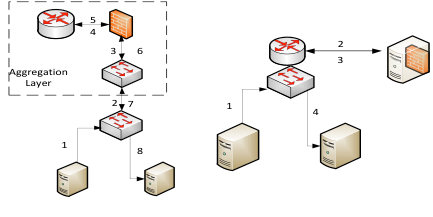IO Visor Project is an IO engine with set of development tools that resides between the Linux OS and hardware, along with a set of development tools. It is an in-kernel virtual machine for IO instructions, somewhat like Java virtual machines. You see apps and a runtime engine atop a host and hardware layer. Being software defined, it has the flexibility for modern IO infrastructure and can become a foundation for new generation of Linux virtualization and networking.
Extended Berkeley Packet Filter (eBPF), the technology that underpins IO Visor, is not new but being a project hosted by the Linux Foundation will enable proliferation. It’s general purpose enough to build storage systems, distributed virtual networks or security sandboxes, but let us examine networking uses.
Don’t we have IO virtualization such as SR-IOV (Single Root I/O virtualization?) Don’t dataplane libraries such as DPDK (data plane development kit) and projects such as P4 provide flexible packet processing too? They may seem to overlap, but are actually complementary. IO Visor combines kernel-space performance with extensibility via plug ins to low level functions (e.g. DPDK or directly to hardware) so you can run IO Visor modules implemented atop DPDK.
With support of Broadcom, Cavium, Cisco, Huawei and Intel we may see plug-ins to support a variety of hardware devices. Networking endpoints have increasingly moved into virtual switches, so it is makes sense to provide IO extensibility within the kernel and not rely solely on physical switches. But physical switches are also important, and with hardware vendor support for this project, we may see IO Visor apps that span from software and hardware devices.
Linux portability gives this project a potentially large footprint. Since Linux is the basis for many network switch OSs – including those from Arista, Cisco Systems, Dell Networking, Cumulus Networks, Extreme Networks, Open Networking Linux (basis for Big Switch Networks’ Switch Light) — on the long-term, many vendors may choose to examine IO Visor.
Since IO Visor is platform independent, it can be hosted on different CPU or hardware network processing units. SuSE and Ubuntu, as founding members, may jumpstart support for the commercial Linux community to support a variety of platforms and devices.
Here are some practical business use cases.
- Security. Performance requirements traditionally requires I/O to run in the kernel but updates were hard to make creating a tradeoff between speed and security functionality. IO Visor reduces this limitation, so I foresee the development of high performance IO security functions that can be updated with new capabilities, just like anti virus programs updating with signatures.Security use cases have used BPF for years. The popular OpenSSH utilities use it to sandbox privileges and Google’s Chrome browser on Linux and Chrome OS use it to sandbox Adobe Flash. Having it in upstream Linux should enable it find more uses.
- Cloud building blocks. Converged systems integrate storage, compute and virtualization, and will benefit from a universal IO layer. Systems like VMware vSphere distributed switches provides networking devices that spans multi hosts, but don’t offer platform independent extensibility. IO Visor enables creation of distributed virtual networks. PLUMgrid, which contributed the initial IO Visor code, based their Open Networking Suite on this technology, so it’s known to work commercially.
- Carrier networking. Carriers support NFV in the pursuit of reducing opex, capex and increasing agility, but performance demands have been a concern. IO Visor can provide the performance with dynamic changes. Since IO Visor does not require physical or virtual appliances to create distributed networks, it can drive high density and reduced capex for carriers uses such as vCPE. Some founding member companies provide technologies to carriers, and through collaboration OPNFV, I expect carrier networking requirements will influence IO Visor development in new ways.
Foundational software systems, regardless of technical soundness, cannot succeed unless there are applications. Since the project founding members provide a wide range of solutions, we expect their contributions to build applications, tools and IO Modules and not focus solely on the IO Visor engine.
End-users won’t directly interact with IO Visor but they will instead see improvements in performance, flexibility and security and being introduced to new classes of Linux based tools and devices.
Given that Linux is used widely, we feel this project can have widespread affects throughout the Linux virtualization and networking space. With this project, another layer of the IT infrastructure may get transformed to provided more flexibility in a portable, open manner.
—
About the author of this post
 Dan Conde
Dan Conde
 Chaitanya (CK) Kodeboyina
Chaitanya (CK) Kodeboyina
 Jianwen Pi
Jianwen Pi Frank Rego
Frank Rego